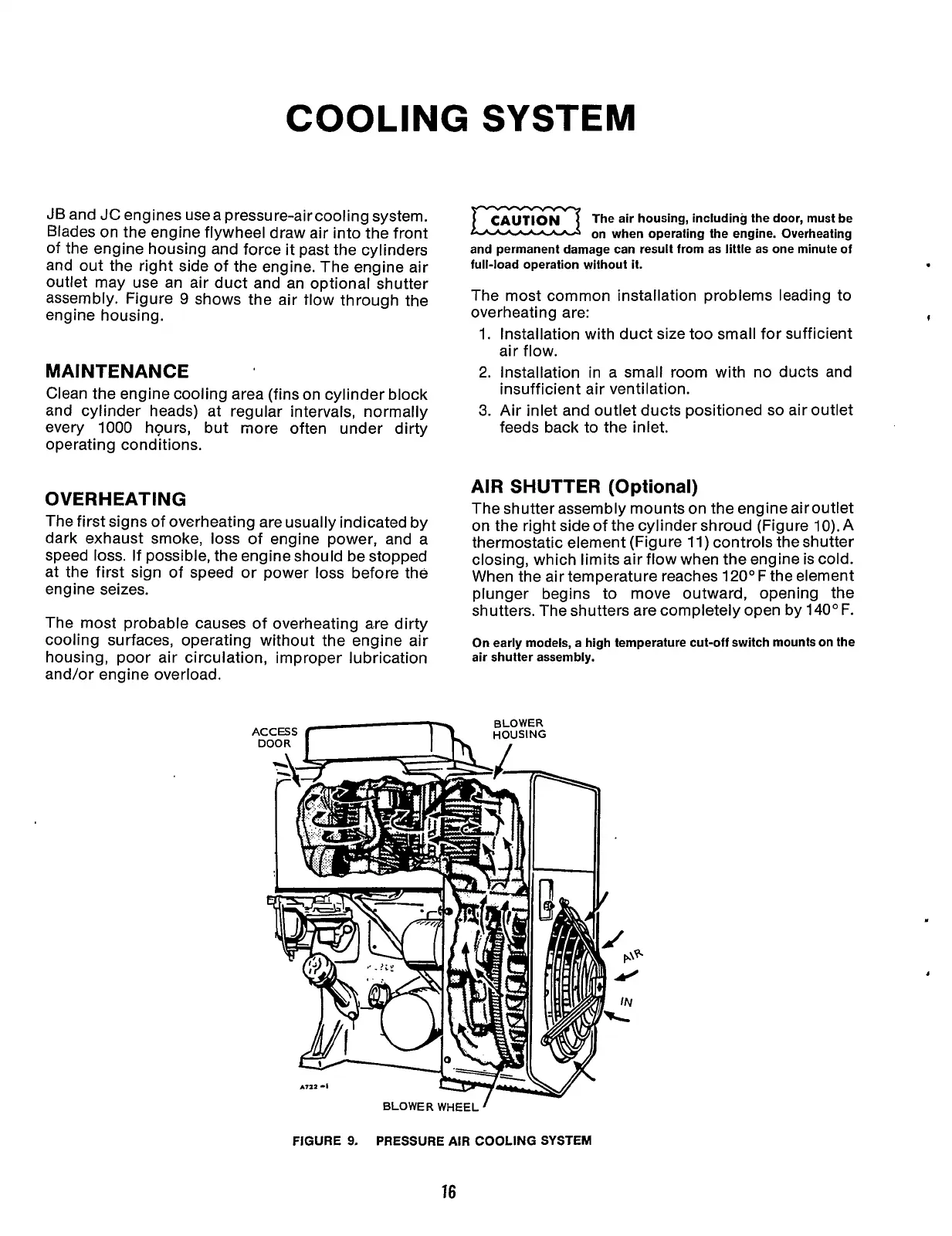CQOLING
SYSTEM
JB and JC engines usea pressure-aircooling system.
Blades on the engine flywheel draw air into the front
of the engine housing and force it past the cylinders
and out the right side of the engine. The engine air
outlet may use an air duct and an optional shutter
assembly. Figure
9
shows the air tlow through the
engine housing.
MAINTENANCE
Clean the engine cooling area (fins on cylinder block
2nd cylinder heads) at regular intervals, normally
every 1000 hours, but more often under dirty
operating conditions.
OVERHEATING
The first signs of Overheating are usually indicated by
dark exhaust smoke,
loss
of engine power, and a
speed
loss.
If possible, the engine should be stopped
at the first sign of speed or power
loss
before the
engine seizes.
The most probable causes of overheating a.re dirty
cooling surfaces, operating without the engine air
housing, poor air circulation, improper lubrication
and/or engine overload.
The air housing, including the door, must be
on when operating the engine. Overheating
and permanent damage can result from as little as one minute of
full-load operation without
it.
The most common installation problems leading to
overheating are:
1. Installation with duct size too small for sufficient
air flow.
2. Installation in a small room with no ducts and
insufficient air vent
i
I
at ion.
3.
Air inlet and outlet ducts positioned
so
air outlet
feeds back to the inlet.
AIR SHUTTER (Optional)
The shutter assembly mounts on the engine airoutlet
on the right side of the cylinder shroud (Figure 10). A
thermostatic element (Figure 11) controls the shutter
closing, which limits air flow when the engine
is
cold.
When the air temperature reaches 120" F the element
plunger begins to move outward, opening the
shutters. The shutters are completely open by 140OF.
On early models, a high temperature cut-off switch mounts on the
air shutter assembly.
BLOWER
BLOWER WHEEL
FIGURE
9.
PRESSURE
AIR
COOLING SYSTEM
16
Redistribution or publication of this document,
by any means, is strictly prohibited.
